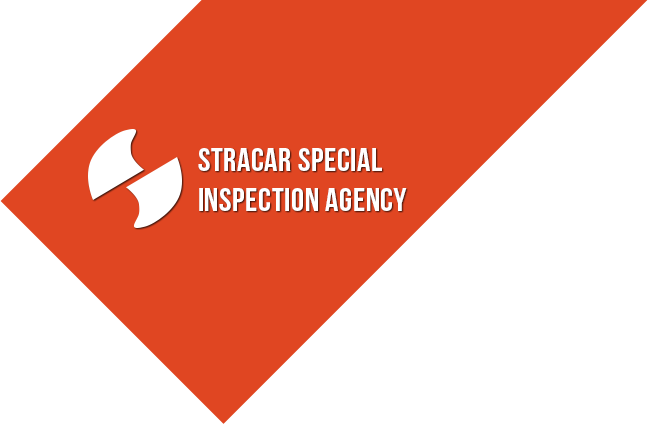Mansory
BC 1704.5
1704.5 Masonry construction. Masonry construction shall be inspected and evaluated in accordance with the requirements of this section, depending on the structural occupancy category of the building or structure or nature of occupancy, as defined by this code (see Table 1604.5 and Section 1616.2).
Exception: Special inspections shall not be required for:
- Empirically designed masonry, glass unit masonry or masonry veneer designed by Section 2109, 2110 or ACI 530/ASCE 5/TMS 402, Chapters 5,6 or 7, when they are part of nonessential buildings (see Table 1604.5 and Section 1616.2).
- Masonry foundation walls constructed in accordance with Table 1805.5(1), 1805.5(2), 1805.5(3) or 1805.5(4).
| Special Inspection: | Masonry |
| Code Section(s): | BC 1704.5 |
| Minimum Qualifications: | Primary Inspector or Inspection Supervisor. a. PE or RA; and b. 1 year relevant experience |
| Supplemental Inspector (Alternative 1), a. Bachelor’s degree in engineering or architecture; and b. ICC Certification as a Structural Masonry Special Inspector; and c. 1 year relevant experience |
|
| Supplemental Inspector (Alternative 2) a.ICC Certification as a Structural Masonry Special Inspector; and b. 2 years relevant experience |
| Inspection Task: | Inspection Interval (Continuous/Peri odic) | NYC Construction Code Reference Section | Reference Standard (e.g. ASTM X1234) | Baseline Document (Approved plans, Shop Drawings, Manufacturer’s Instructions, etc.) | Comments (e.g. needs test performed by Approved Testing Agency) |
| 1. As masonry construction begins the following shall be verified to ensure clompliance: | |||||
| a. Proportion of site-prepared mortar
1. Mortar A. Verify that all cementitious materials and aggregates are mixed between 3 and 5 min. in a mechanical batch mixer wtih a sufficient amount of water to produce a workable consistency. B. Verify that no mortar is hand mixed unless acceptable to the Architect of Engineer of Record C. Verify that the workability of mortar is maintained by remixing or retempering D. Verify that the contractoris discarding all mortar which has begun to stiffen or is not used within 2 1/2 hours after initial mixing E. If mineral oxide or carbon black job site pigments are used, verify that the maximum percentage by weight of cement is limited as follows: a. Pigmented portland cement-lime mortar 1) Mineral oxide pigment 10% 2) Carbon black pigment 2% |
Periodic. | 1704.5.2 | ACI 530.1/ASCE6/TMS 602 Art 2.6A | Project drawings, Specifications and Manufacturer’s Instructions | |
| b. Construction of mortar joints
1. Placing mortar and units A. Bed and head joints- Verify that the bed and head joints are constructed at least 3/8 in. (9.5 mm) except at foundation or with glass unit masonry. B. Verify that the bed joint of the starting course of foundation is constructed with a thickness not less than 1/4 in. (6.4 mm) and not more than 3/4 in. (19.1 mm) C. For glass unit masonry verify that the bed and head joint thicknesses is 1/4″. Or as specified in drawings and specifications. For radial masonry verify that the thickness of the vertical joint is not less than 1/8. The allowable tolerance shall be in accordance with Article 3.3 B 5.c. D. Verify that the constructed joints also conform to the following: 1. All holes not specified shall be filled in exposed and below grade masonry with mortar. 2. Unless otherwise required, verify that all joints are tooled with a round jointer when the mortar is thumbprint hard 3. Verify that all masonry protrusions extending 1/2 in (12.7 mm) or more into cells or cavities to be grouted are removed E. Verify that all Collar joints less than 3/4 in. (19.1 mm) wide are solidly filled joints with mortar as the job progresses F. Verify the following for Hollow units- 1. Face shells of bed joints are fully mortared 2. Webs are fully mortared in all courses of piers, columns and pilasters, in the starting course on foundations, when necessary to confine grout or loose-fill insulation, and when otherwise required 3. Head joints are mortared, a minimum distance from each face equal to the face shell thickness of the unit 4. Vertical cells to be grouted are aligned adn unobstructed openings for grout are provided in accordance with the Project Drawings G. Verify the following for Solid units- Unless otherwise required, solidly fill bed and head joints with mortar and: 1. Do not fill head joints by slushing with mortar 2. Construct head joints by showing mortar tight against the adjoining unit 3. Do not deeply furrow bed joints H. Verify the following for Glass units- 1. Verify that complete coat of asphalt emulsion, not exceeding 1/8 in. (3.2 mm) in thickness, is applied to panel bases 2. Verify that the units are laid so head and bed joints are filled solidly. Do not allow furrowing in mortar 3. Verify that unless otherwise specified, the head and bed joints of glass unit masonry are constructed 1/4 in. (6.4 mm) thick, except that vertical joint thickness of radial panels shall not be less than 1/8 in. (3.2 mm). The bed joint thickness of radial panels shall not be less than 1/8 in. (3.2 mm). The head joint thickness tolerance shall be plus or minus 1/8 in. (3.2 mm). 4. Verify that no glass units are cut I All units 1. Verify that all clean units are placed clean while the mortar is soft and plastic. Make sure that any unit distributed to the extent that initial bond is broken are removed adn relayed in fresh mortar after initial positioning. 2. Verify that except for glass units, all exposed edges are or faces of masonry units are cut smooth, or position such that all exposed faces or edges are unaltered manufactured surfaces. 3. Notify the Architect/ Engineer when the bearing of a masonry wythe on its support is less thatn two thirds of the wythe thickness. |
Periodic | 1704.5.2 | ACI 530.1/ ASCE6/TMS 602 Art 2.6 A
ACI 530.1/ASCE6/TMS 602 Art 3.3 B.5.c |
Project drawings, Specifications and Manufacturer’s Instructions | |
| c. Location of reinforcement, connectors, prestressing tendons and anchorage
A. Reinforcement installation 1. Verify placement of reinforcement and accessories in accordance with the sizes, types, and locations indicated on teh Project Drawings, and as specified 2. Do not allow placement of dissimilar metals in contact with each other 3. Verify that the reinforcement is supported and fastened together to prevent displacement beyond the tolerances allowed by construction loads or by placement of grout or mortar. B. Details or reinforcement 1. Verify that the reinforcing bars are completely embedded in grout 2. Verify that clear distance is maintained between reinforcing bars and any face of masonry unit or formed surface, but not less than 1/4 in. (6.4 mm) for fine grout or 1/2 in. (12.7 mm) for coarse grout 3. Verify that the Splices occur only where indicated on the Project Drawings, unless otherwise acceptable 4. Verify that unless accepted by the Architect/ Engineer, reinforcement is not bent after it is embedded in grout or mortar 5. Verify the placement of joint reinforcement so that longitudinal wires are embedded in mortar with a minimum cover of 1/2 in. (12.7 mm) when not exposed to weather or earth and 5/8 in. (15.9 mm) when exposed to weather or earth. C. Wall ties 1. Verify that the ends of wall ties are embedded in mortar joints. Minimum will tie ends embedment shall be at least 1/2 in. (13 mm) into the outer face shell of hollow units 2. Verify that the wire wall ties if used are embedded at least 11/2 in. (38.1 mm) into the mortar bed of solid masonry units or solid grouted hollow units 3. If withes are not bonded by headers and the ties are rigid type verify that the following ties are present: Wire size/ Minimum number of off wall ties reqiured: W1.7 (mW11)/ One per 2.67 ft sq. (0.25 m sq) W2.8 (MW18)/ One per 4.50 ft sq (0.42 m sq) Verify that the maximum spacing between ties does not exceed 36 in. (914 mm) horizontally and 24 in. (610 mm) vertically. 4. Verify that the (unless accepted by the Architect/ Engineer), wall ties are not bent after being embedded in grout or mortar 5. Verify the following if adjustable ties are used a. There is a minimum of one tie for each 1.77 ft sq (0.16 m sq) of wall ares b. Adjustable tie spacing do not exceed 16 in. (406 mm) horizontal or vertically c. Verify that the maximum misalignment of bed joints from one wythe to the otehr is within 1 1/4 in. (31.8 mm) d. The maximum clearance between connecting parts of the ties is 1/16 in. (1.6 mm) e. When pintle legs are used, provide ties with at least two legs made of wire size W2.8 (MW118) 6. Verify that the wire ties are installed perpendicular to a vertical line on the face of the wythe from which they protrude. Where one-piece ties or joint reinforcement are used, the bed joints of adjacent wythes are aligned 7. Verify that additional unit ties are installed around all openings larger than 16 in (406 mm) in either dimension. Verify that the ties around perimeter of opening are placed at a maximum of 3 ft (0.91m) on center and ties are placed within 12 in. (305 mm) of opening. D. Verify that reinforcement is placed within Placement tolerances indicated below: 1. Tolerances for the placement of steel in walls and flexural elements shall be +/- 1/2 in. (12.7 mm) when the distance from the centerline of steel to the opposite face of masonry, d, is equal to 8 in. (203mm) or less, +/- 1 in. (25.4 mm) for d equal to 24 in. (610 mm) or less but greater than 8 in. (203 mm), and +/- 11/4 in. (31.8 mm) for d greater thatn 24 in. (610 mm). 2. Verify that the vertical bars are placed within 2 in (50.8mm) of the required location along the length of the wall 3. If the bars are moved more than one bar diameter or a distance exceeding the tolerance stated above to avoid interference wtih other reinforcing steel, conduits, or embedded items, noticy the Architect/ Engineer for acceptance of the resulting arrangement of bars E. For Glass masonry panel anchors- When used in lieu of channel-type restraints, install panel anchors as follows: 1. Unless otherwise required, verify that the panel anchors are spaced at 16 in. (406 mm) in both the jambs and across the head 2. Verify that the panel anchors are embedded a minimum 12 in. (305 mm), except for panels less than 2 ft (0.61m) in the direction of embedment. When a panel dimension is less than 2 ft (0.61 m), embed panel anchors in the short direction a minimum of 6 in. (152 mm), unless otherwise required. 3. Verify that there are at least two fasteners, capable of resisting loads, per panel anchor. |
Periodic | 1704.5.2 | ACI 530.1/ ASCE6/ TMS 602 Art 3.4 | Project Drawings, Specifications and Manufacturer’s Instructions |


